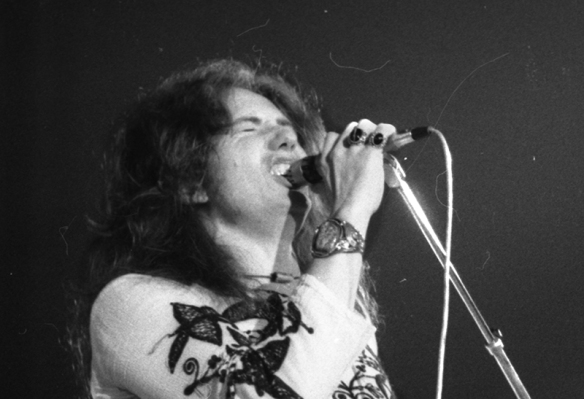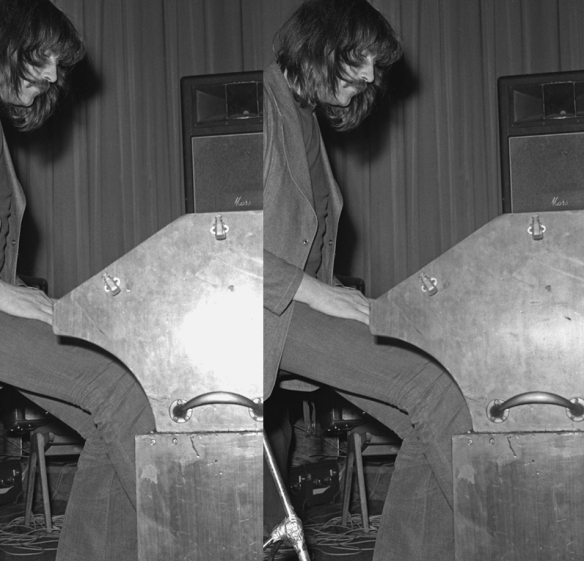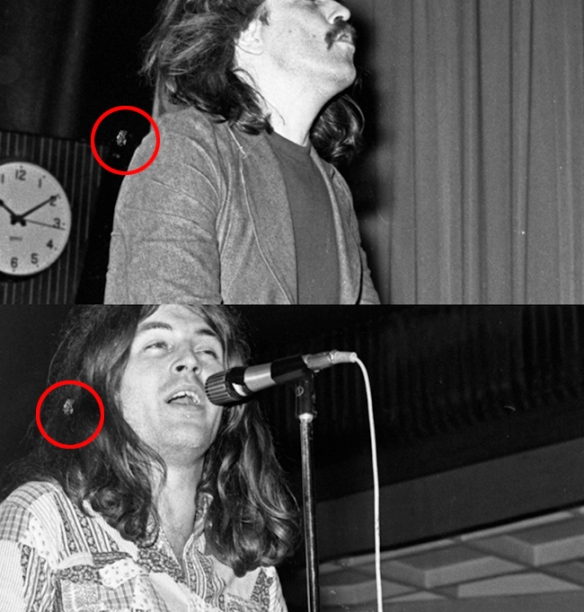
I thought it might be worth posting these before and afters, mainly as someone was saying the other day “surely all you have to do is layout the images”…! And yes at first glance that might seem to be the case. But once you start to delve into each photograph at 100% on a large monitor all sorts of things start to reveal themselves and this frame is a good example. This work is a result of going over the first printed proofs, working on the scans some more where needed. Back at the time the photographer was aiming to get a few good prints out of a roll to give to the music press picture editor, and films might often be processed late at night after a concert. This “before” frame shows the results of issues which used to plague photographers in the pre-digital era, namely dust drying on the negative; water marks caused by uneven drying and scratches due to, well all sorts really. I remember doing this myself and cursing, and even a roll of Rainbow negatives I had developed professionally once came back in a real state.

However help is at hand these days, as the “after” version above shows. It is very time consuming work and basically involves retouching each mark by hand. There are some automated options but these are not practical with negatives like this as they also affect detail which you want to keep. However, the hand work is worth it and as you can see the end result looks great. There are also options to tweak shadow detail and bring out aspects of the photograph not seen before. DC still has this black and white cheesecloth embroidered shirt apparently, which was most famously seen at the California Jam show a few weeks prior to the UK tour.

The second shot above I call ‘restoring Jon’s organ’. This negative was very flat and grey, so needed work to restore contrast and levels, which worked fine. But the flash gun had really hammered the varnish on the side of the Hammond. The only solution was to carefully cut this section out and work on it as a separate layer, then merge the two back together. You can see the before and after effect here. It has occurred to us that the grab handles have come from an ironmongers, they’re your typical door handles made of enamelled cast iron just screwed on, and not the sort of accessory imagined by Mr. Hammond. The Hammond here is actually a hired organ, brought in as his roadies had got fed up of trying to repair his white custom machine. The upcoming Machine Head book (due 2021 from Easy On The Eye books) goes into all this in great detail as you might imagine!
There is also the question of retouching specks of dirt. Most of the time it is clear what needs removing and what is part of the original photograph. But not always. Take this mark which looked like a bit of gaffa tape in the background of the unrestored Jon Lord photo. But then it turned up later in Ian Gillan’s hair! So a bit of dirt on the lens back at the BBC recording in 1972, and one which has now been removed from both photos.

